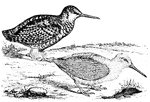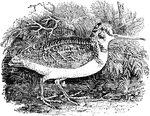Clipart tagged: ‘Woodcock’
!["[From left to right:] Fusus Longissimus, Pearl Oyster and Coral, Volute, Thorny Woodcock." — Goodrich, 1859](https://etc.usf.edu/clipart/13900/13992/mollusca_13992_mth.gif)
Mollusca
"[From left to right:] Fusus Longissimus, Pearl Oyster and Coral, Volute, Thorny Woodcock." —…
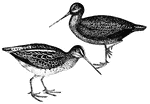
Snipe
The snipe does not live so solitary a life as the Woodcock; it is occasionally seen in flocks.
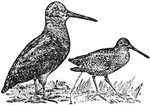
Woodcock
The name of several birds commonly classed in the same genus as the snipes, but having a more bulky…

Woodcock
"Scolopas rusticula, the well known Woodcock, brown, grey, and buff in color, with blackish vermiculations…
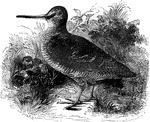
European Woodcock
The European woodcock averages about thirteen inches in length, and prefers to feed on earthworms. It…

Young Woodcock
The woodcocks are a group of seven extant very similar wading bird species in the genus Scolopax, characterised…

